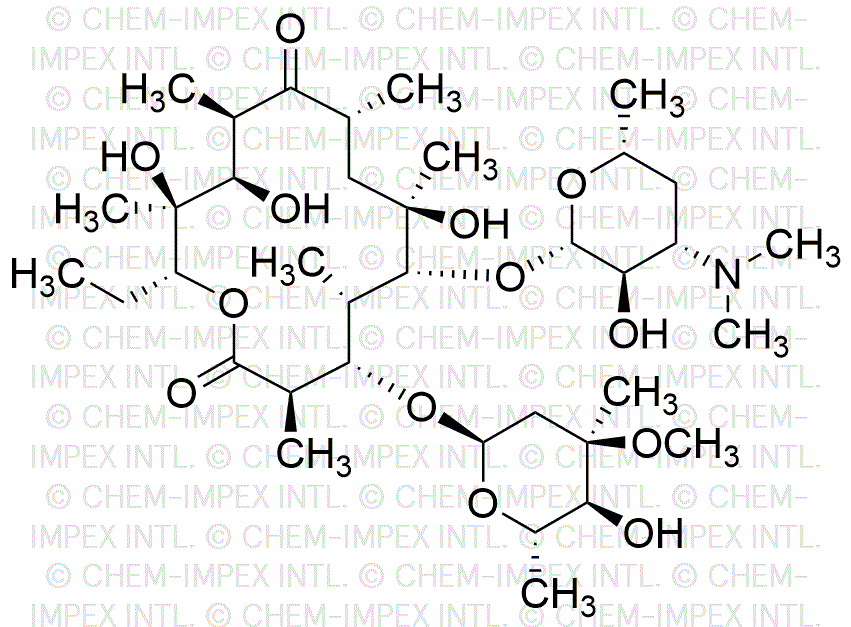Erythromycin is widely utilized in research focused on:
- Antibiotic Treatment: Commonly used to treat bacterial infections, particularly in patients allergic to penicillin, making it a vital option in clinical settings.
- Pharmaceutical Development: Serves as a model compound in drug formulation studies, helping researchers understand drug interactions and bioavailability.
- Veterinary Medicine: Applied in the treatment of infections in livestock and pets, contributing to animal health and productivity in agriculture.
- Microbial Resistance Studies: Used in research to study antibiotic resistance mechanisms, aiding in the development of new therapeutic strategies.
- Topical Preparations: Incorporated in creams and ointments for skin infections, providing localized treatment with minimal systemic effects.
General Information
Properties
Safety and Regulations
Applications
Erythromycin is widely utilized in research focused on:
- Antibiotic Treatment: Commonly used to treat bacterial infections, particularly in patients allergic to penicillin, making it a vital option in clinical settings.
- Pharmaceutical Development: Serves as a model compound in drug formulation studies, helping researchers understand drug interactions and bioavailability.
- Veterinary Medicine: Applied in the treatment of infections in livestock and pets, contributing to animal health and productivity in agriculture.
- Microbial Resistance Studies: Used in research to study antibiotic resistance mechanisms, aiding in the development of new therapeutic strategies.
- Topical Preparations: Incorporated in creams and ointments for skin infections, providing localized treatment with minimal systemic effects.
Documents
Safety Data Sheets (SDS)
The SDS provides comprehensive safety information on handling, storage, and disposal of the product.
Product Specification (PS)
The PS provides a comprehensive breakdown of the product’s properties, including chemical composition, physical state, purity, and storage requirements. It also details acceptable quality ranges and the product's intended applications.
Certificates of Analysis (COA)
Search for Certificates of Analysis (COA) by entering the products Lot Number. Lot and Batch Numbers can be found on a product’s label following the words ‘Lot’ or ‘Batch’.
Numéro de catalogue
Numéro de lot/série
Certificates Of Origin (COO)
This COO confirms the country where the product was manufactured, and also details the materials and components used in it and whether it is derived from natural, synthetic, or other specific sources. This certificate may be required for customs, trade, and regulatory compliance.
Numéro de catalogue
Numéro de lot/série
Safety Data Sheets (SDS)
The SDS provides comprehensive safety information on handling, storage, and disposal of the product.
DownloadProduct Specification (PS)
The PS provides a comprehensive breakdown of the product’s properties, including chemical composition, physical state, purity, and storage requirements. It also details acceptable quality ranges and the product's intended applications.
DownloadCertificates of Analysis (COA)
Search for Certificates of Analysis (COA) by entering the products Lot Number. Lot and Batch Numbers can be found on a product’s label following the words ‘Lot’ or ‘Batch’.
Numéro de catalogue
Numéro de lot/série
Certificates Of Origin (COO)
This COO confirms the country where the product was manufactured, and also details the materials and components used in it and whether it is derived from natural, synthetic, or other specific sources. This certificate may be required for customs, trade, and regulatory compliance.


